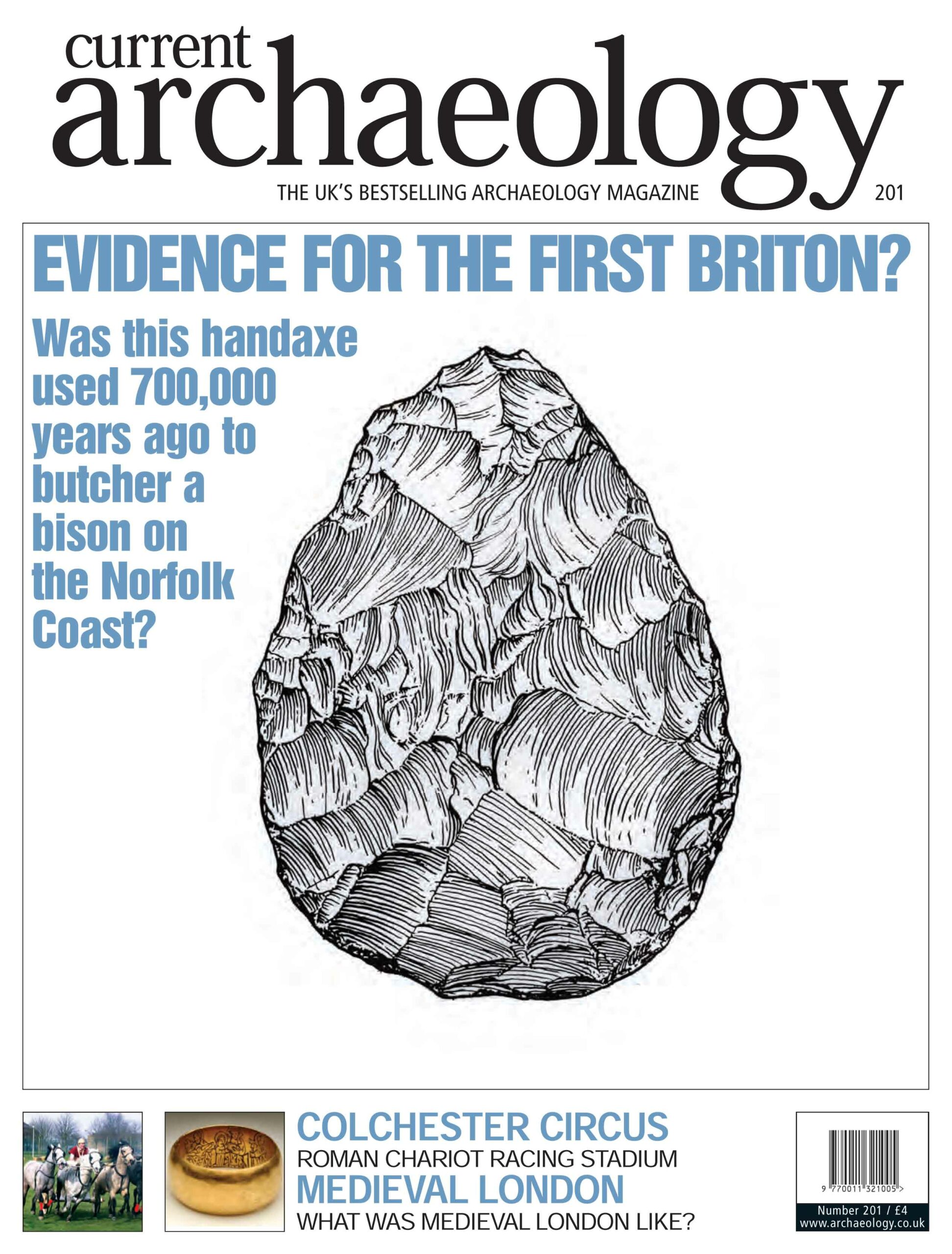Barely ten years ago, experts still believed hominids arrived in Northern Europe only after the Great Anglian Glaciation of c.450,000 BC. Then came Boxgrove, the site of a grassy plain buried by glacial debris on what is now the South Coast, where hominids had hunted and butchered large mammals half a million years ago. But now there is Happisburgh and Pakefield. Here, too, are handaxes and butchered bone. They are being eroded onto the Norfolk beaches from the ‘Cromer Forest Beds’. Yet this level is dated two Ice Ages earlier than Boxgrove – making the hominids a staggering 700,000 years old. Our lead feature this issue is a report by top prehistorians John Wymer and Peter Robins on the discovery of the earliest hominids in Northern Europe.
Our second big report comes from Colchester. Most Roman of our Roman towns, Colchester has always been best candidate for a British chariot-racing track. Last year, scattered trenches across the site of a major housing development yielded a pattern of alignments that left no doubt: it was a Roman circus some 450m long and 75m wide. Leading local archaeologist Philip Crummy offers us the first full report – and speculates on a racing craze in Roman Britain!
Continuing the Roman theme, we begin a two-part review of Time Team’s Big Roman Dig. Carenza Lewis gives us the insider’s experience of making the programmes and describes the Roman forts at Dynevor and what they tell us about the Roman conquest of Wales. Later in the issue, Jayne Lawes reports on another Early Roman site in the West featured in Big Roman Dig: Blacklands Field near Frome, where a small villa with a very monumental gateway implies a retired military man with delusions of grandeur in ancient Somerset!
Then we turn to London, first to review the new Medieval London Gallery that has just opened at the Museum of London in the Barbican. A fascinating selection of objects is on display, but how well do they tell the story of the city from AD 410 to 1558?
Finally we come right up to the 20th century to cover a Museum of London excavation of Victorian terraces and Blitz bomb-damage at Shoreditch Park in Hackney. It was a dig that stirred vivid memories in old East Enders, while giving local kids hands-on experience of granny’s war. But is this really archaeology? Can we actually learn anything from digging Second World War sites? The archaeologists in charge are in no doubt.
Most of our regulars are here, too: News, Books and Letters. But we have made some changes to the magazine. We have tried to make the layout a bit less cluttered and easier to read. We have started giving our articles titles that reflect themes instead of simply naming a site. Short reports have been shifted to News, and we have allowed Andrew Selkirk, our Editor-in-Chief, space to hold forth on current affairs in Last Word. And we are editing letters to make them more concise and punchy. Be warned: we want to hear from you – many more of you, indeed – but we are asking you to be brief and to-the-point to make space for more debate.
Good reading!
Neil Faulkner

